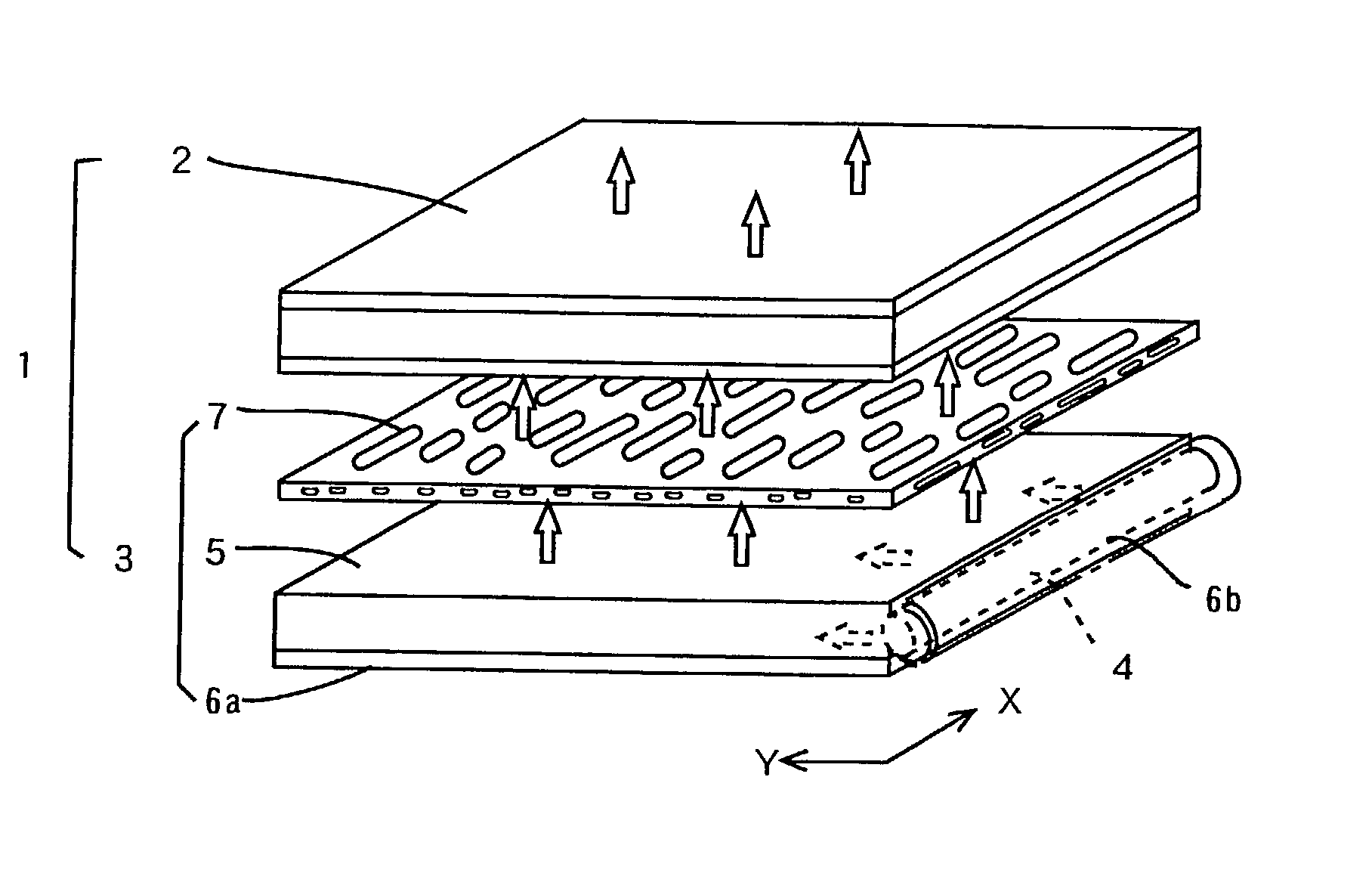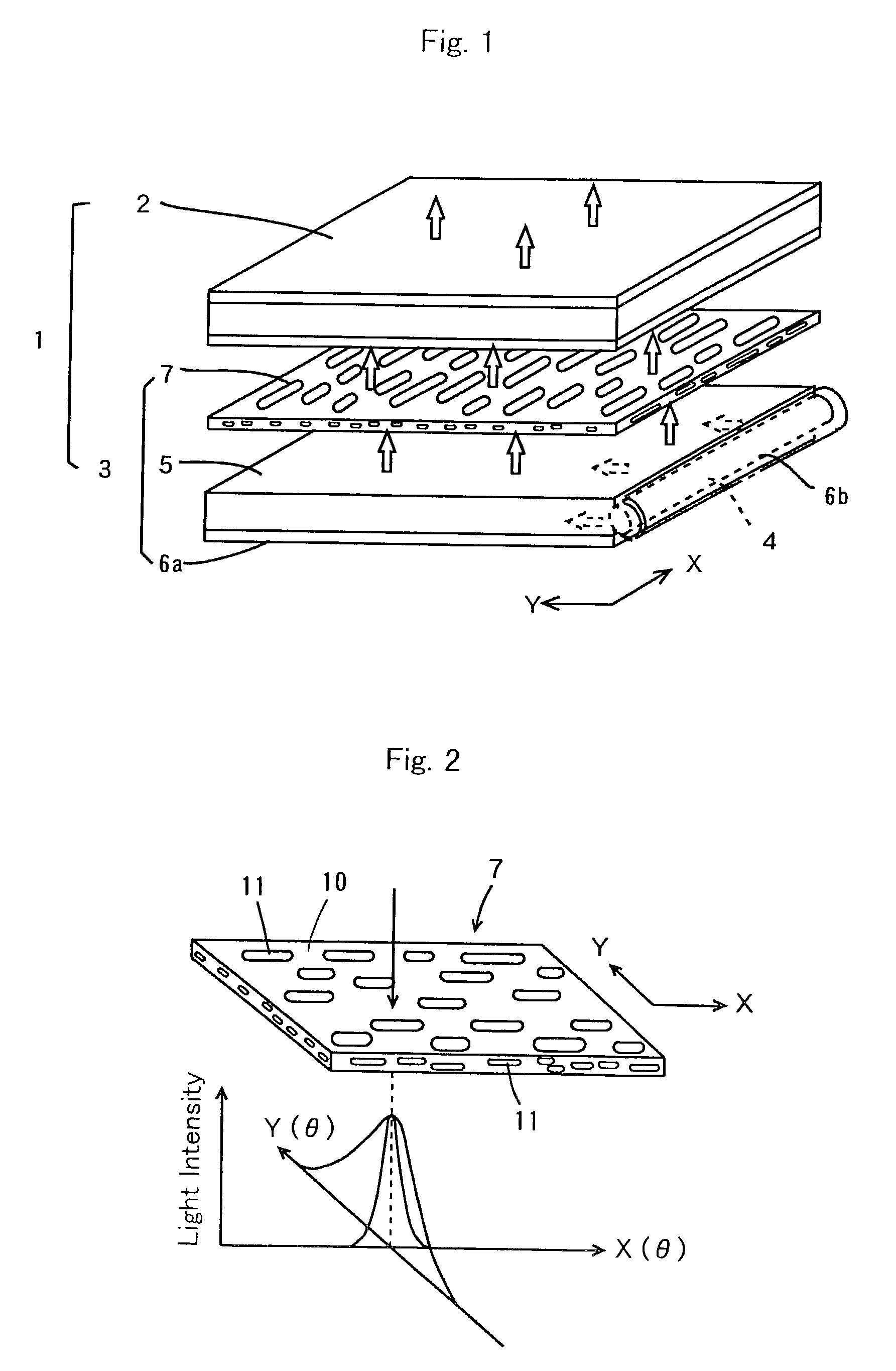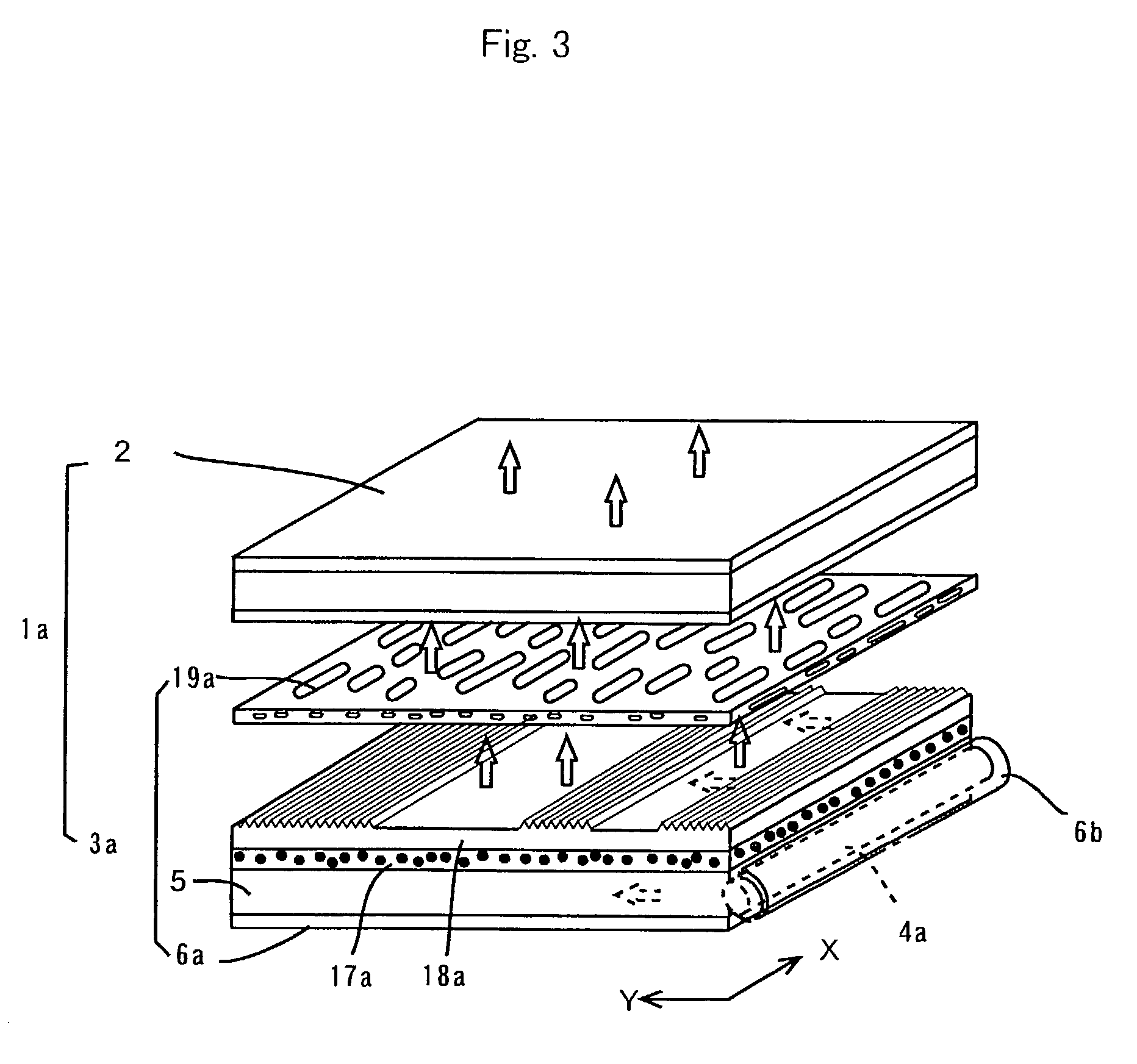Anisotropic scattering sheet and its use
- Summary
- Abstract
- Description
- Claims
- Application Information
AI Technical Summary
Benefits of technology
Problems solved by technology
Method used
Image
Examples
example 1
[0178] As the continuous phase resin, 60 parts by weight of crystalline polypropylene-series resin PP (manufactured by Grand Polymer Co.; F109BA, refractive index 1.503); as the dispersed phase resin, 36 parts by weight of noncrystalline copolyester-series resin (PET-G, manufactured by Eastman Chemical Company; Eastar PETG GN071, refractive index 1.567); and as the compatibilizing agent, 4 parts by weight of epoxidized diene-series block copolymer resin (manufactured by Daicel Chemical Industries, Ltd.; Epofriend AT202; styrene / butadiene 70 / 30 (by weight), epoxy equivalent 750, refractive index about 1.57) were used. The refractive index differential between the continuous phase resin and the dispersed phase resin was 0.064.
[0179] The above continuous phase resin and dispersed phase resin were dried at 70.degree. C. for about 4 hours, and kneaded these resins in a Banbury mixer. Using an extruder of multi-layered type, the kneaded product for forming a center or intermediate layer a...
example 2
[0184] The above continuous phase resin and dispersed phase resin were melt-molded in the same manner as Example 1, and extruded from a T-die at a draw ratio of about 6 onto a cooling drum having a surface temperature of 25.degree. C. The total thickness of the obtained sheet was 125 .mu.m, and an anisotropic scattering sheet was composed of a light-scattering layer as the center layer having a thickness of about 100 .mu.m and surface layers formed by a continuous phase resin on both sides the scattering layer and each having about 12.5 .mu.m thickness.
[0185] Observation of the micro-structure of thus obtained sheet in the same manner as Example 1 revealed that the dispersed phase of the center layer showed like an elongated fiber, with a mean major axis dimension of about 15 .mu.m and a mean minor axis dimension of about 2 .mu.m. Measurement of the light-scattering characteristic of thus obtained anisotropic scattering sheet revealed that Fy(4.degree.) / Fx(4.degree.) was 2.4, with r...
example 3
[0186] An original sheet having a three-layered structure for roll-calendering was produced in the same manner as in Example 1. The sheet was monoaxially stretched by the roll calendering method (125.degree. C., stretching factor of about 2.5 times (thickness reduction rate of about 0.4), width reduction rate of about 3%) to obtain a 100 .mu.m-thick film. Observation of the micro-structure of the sheet in the same manner as in Example 1 revealed that the dispersed phase of the center layer had a highly elongated fiber, with a mean major axis dimension of about 40 .mu.m and a mean minor axis dimension of about 1.3 .mu.m.
PUM
 Login to View More
Login to View More Abstract
Description
Claims
Application Information
 Login to View More
Login to View More - R&D
- Intellectual Property
- Life Sciences
- Materials
- Tech Scout
- Unparalleled Data Quality
- Higher Quality Content
- 60% Fewer Hallucinations
Browse by: Latest US Patents, China's latest patents, Technical Efficacy Thesaurus, Application Domain, Technology Topic, Popular Technical Reports.
© 2025 PatSnap. All rights reserved.Legal|Privacy policy|Modern Slavery Act Transparency Statement|Sitemap|About US| Contact US: help@patsnap.com



